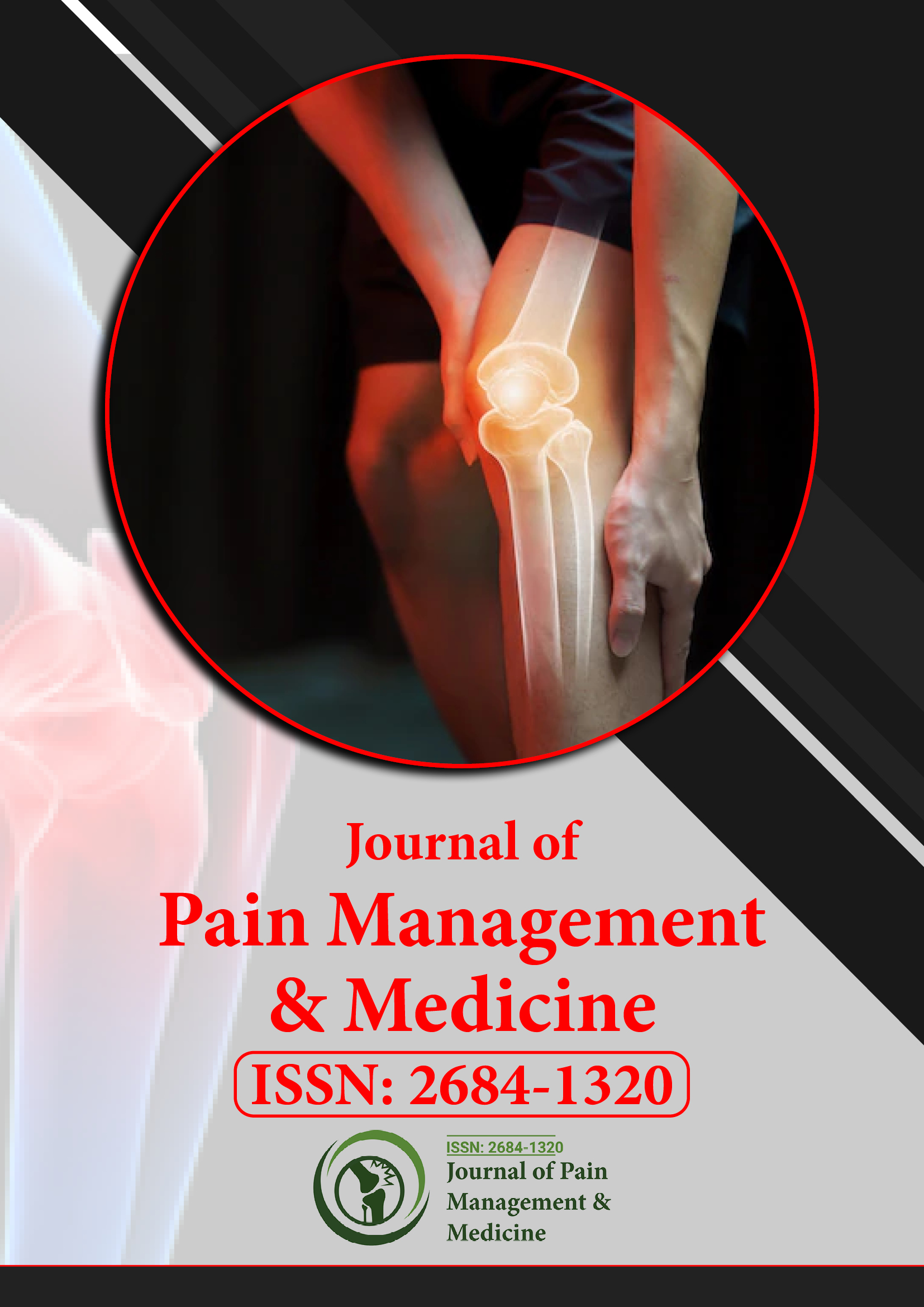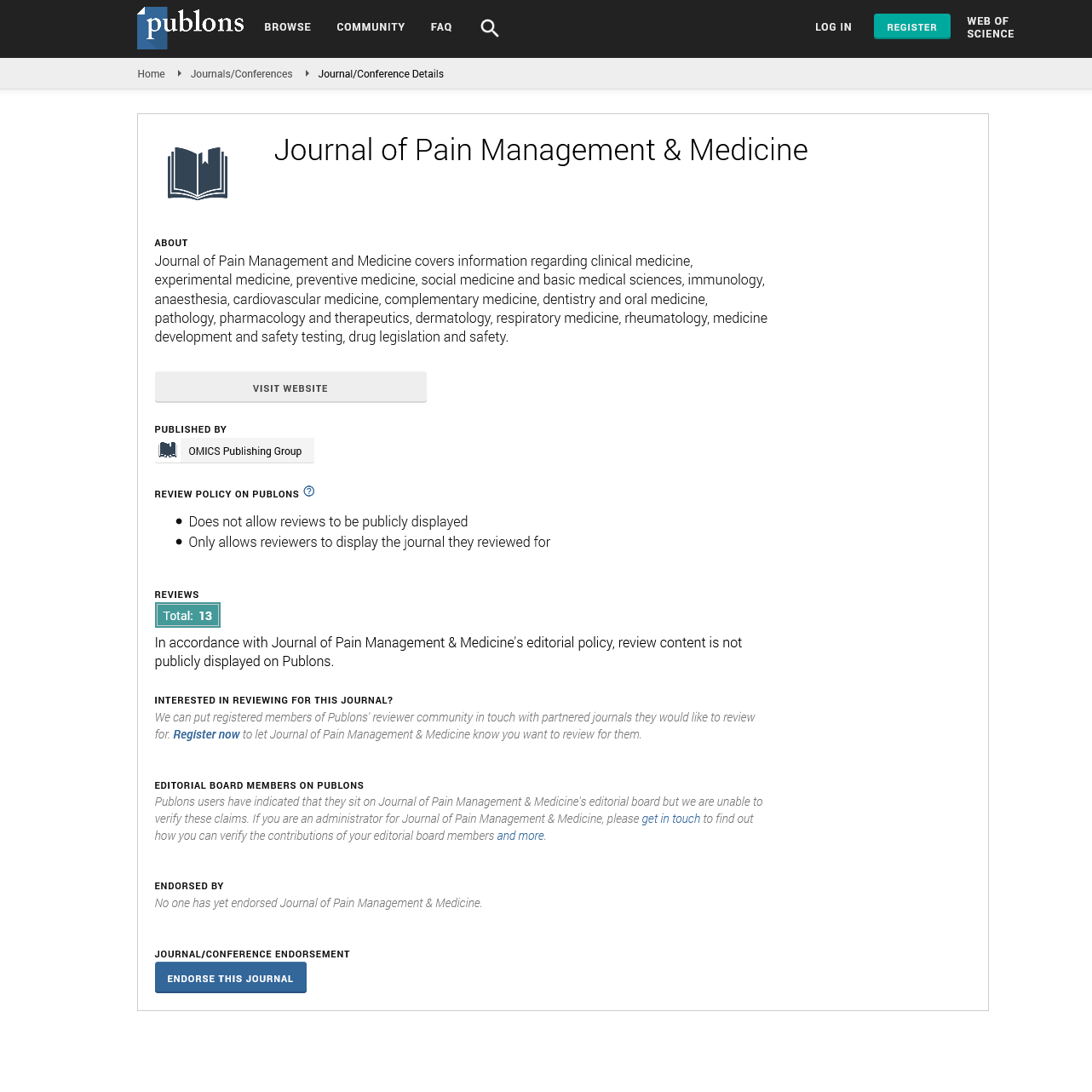Indexed In
- RefSeek
- Hamdard University
- EBSCO A-Z
- Publons
- Euro Pub
- Google Scholar
- Quality Open Access Market
Useful Links
Share This Page
Journal Flyer

Open Access Journals
- Agri and Aquaculture
- Biochemistry
- Bioinformatics & Systems Biology
- Business & Management
- Chemistry
- Clinical Sciences
- Engineering
- Food & Nutrition
- General Science
- Genetics & Molecular Biology
- Immunology & Microbiology
- Medical Sciences
- Neuroscience & Psychology
- Nursing & Health Care
- Pharmaceutical Sciences
Commentary - (2025) Volume 11, Issue 3
Advances in Endometrial Biopsy Techniques and Pain Relief
Fei Wang*Received: 30-Apr-2025, Manuscript No. JPMME-25-29856; Editor assigned: 02-May-2025, Pre QC No. JPMME-25-29856 (PQ); Reviewed: 16-May-2025, QC No. JPMME-25-29856; Revised: 23-May-2025, Manuscript No. JPMME-25-29856 (R); Published: 30-May-2025, DOI: 10.35248/2684-1320.25.11.328
Description
Endometrial biopsy is a widely performed gynecological procedure that involves sampling of the endometrial lining for diagnostic purposes. It plays an important role in evaluating abnormal uterine bleeding, investigating infertility, and ruling out malignancies such as endometrial carcinoma or hyperplasia. Being minimally invasive, it can be performed in an outpatient setting, offering a reliable and cost-effective alternative to more invasive diagnostic methods like dilation and curettage. However, despite its clinical utility, concerns regarding pain and patient discomfort remain central to its practice.
The endometrium, or the inner lining of the uterus, undergoes cyclical changes under the influence of hormonal regulation. Abnormalities in this lining, whether structural, hormonal, or neoplastic, often manifest as irregular bleeding, heavy menstrual flow, or postmenopausal bleeding. In such cases, endometrial biopsy provides essential histopathological information that guides clinical decision-making. Additionally, in the evaluation of infertility, biopsy may be used to assess endometrial receptivity, though this indication has become less common with newer imaging and molecular tools.
Several techniques are available for performing an endometrial biopsy, with the Pipelle device being the most widely used due to its simplicity, safety, and diagnostic accuracy. The procedure generally involves inserting a thin, flexible catheter into the uterine cavity through the cervical canal, followed by gentle suction to obtain a tissue sample. Compared to traditional curettage, the Pipelle biopsy requires no anesthesia, has minimal risks, and can be performed within minutes.
Pain is a frequently reported concern during endometrial biopsy, especially in women with cervical stenosis, null parity, or heightened anxiety. The discomfort usually arises from cervical manipulation, uterine instrumentation, and cramping triggered by endometrial sampling. Although the pain is typically transient, it can deter patients from undergoing the procedure and negatively impact overall experience. Therefore, effective pain management strategies are essential.
Several methods have been explored to minimize pain during endometrial biopsy. Pre-procedural counselling and reassurance play a vital role in reducing anxiety and improving tolerance. Nonsteroidal Anti-Inflammatory Drugs (NSAIDs), administered an hour before the procedure, help decrease prostaglandin-mediated uterine contractions and associated pain. Local anesthesia, particularly Para cervical block with lidocaine, has been shown to provide significant relief, although it requires additional time and skill. In some cases, intrauterine instillation of anesthetic agents may also be beneficial. Beyond pharmacological approaches, non-pharmacological interventions can contribute to pain control. Techniques such as distraction, relaxation breathing, and the presence of a support person during the procedure can reduce perceived discomfort. Some studies suggest that the use of smaller-calibre biopsy devices or applying cervical priming agents like misoprostol may ease insertion and sampling, further improving patient comfort.
The safety profile of endometrial biopsy is generally favourable. Complications are rare but may include bleeding, infection, vasovagal reactions, or, very rarely, uterine perforation. Patients are usually advised to monitor for persistent pain, heavy bleeding, or fever after the procedure, and to seek medical attention if such symptoms occur. From a diagnostic perspective, endometrial biopsy has a high sensitivity and specificity in detecting endometrial carcinoma and hyperplasia. However, limitations exist, particularly in cases of focal lesions such as polyps or submucosal fibroids, where sampling may miss localized pathology. In such scenarios, hysteroscopy-directed biopsy remains the gold standard.
In conclusion, endometrial biopsy is a valuable diagnostic procedure that provides critical information for the evaluation of uterine disorders. Its outpatient feasibility, cost-effectiveness, and safety make it an essential tool in gynecological practice. While the procedure is generally well-tolerated, attention to pain management is important to ensure patient comfort and compliance. By integrating pharmacological, nonpharmacological, and supportive strategies, clinicians can enhance the patient experience and optimize the diagnostic utility of endometrial biopsy.
Citation: Wang F (2025). Advances in Endometrial Biopsy Techniques and Pain Relief. J Pain Manage Med. 11:328.
Copyright: © 2025 Wang F. This is an open-access article distributed under the terms of the Creative Commons Attribution License, which permits unrestricted use, distribution, and reproduction in any medium, provided the original author and source are credited

